Since its establishment more than 70 years ago, JCB has been a leader in global construction machinery, agricultural machinery and industrial equipment. As an industrial innovation family, JCB invented many products that affect the world, such as the backhoe loader, commonly known as "two busy", JCB is synonymous with its English. Today's introduction is: JCB another product that shakes the world - the telescopic loading forklift Loadall.
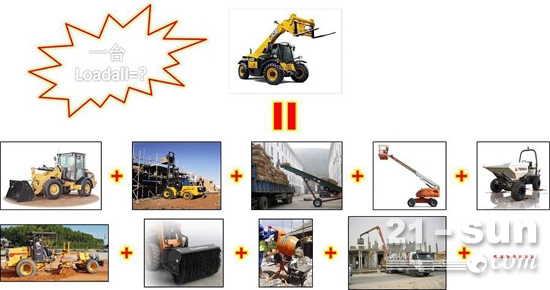
JCB Telehandler Truck
JCB invented and sold the world's first telescopic handler forklifts in 1977. Since its invention, the product has rapidly swept the world and won unanimous recognition from customers all over the world. It has been hailed as one of the “Three Musketeers†for small construction machinery. In 2016, JCB had just finished the ceremony for the production of the 200,000 telescopic handlers, marking the 40th anniversary of this year's JCB invention of telehandlers. JCB will hold a series of major events to celebrate the 40th anniversary of the invention of telescopic handlers.
Do you want to know how a telehandler is produced? Do you want to know what processes are needed to produce this world's best material handling equipment? Please follow our footsteps and look at the JCB telehandler production plant.
40th Anniversary of Invention of JCB Telehandler Truck
One: Excellent Manufacturing Level
Loadall Telescopic Forklift Truck Production Plant located at the JCB headquarters in Rochester, Staffordshire, United Kingdom. At present, JCB has more than 30 types of telescopic handlers. In addition, due to the different configurations of engines, transmissions, booms, and cabs, more than 1,000 configurations are derived. These different configurations of telescopic handlers are manufactured at the Rochester facility in the United Kingdom.

Rochester factory
A quality equipment starts with high quality steel. According to the information sharing production plan, the supplier supplies steel for JCB daily as needed. Steel is mainly used for the production of telescopic forklift truck frames, legs and booms. JCB's annual steel demand exceeds 35,000 tons.
As a manufacturer dedicated to vertical integration, there is also a JCB plant around JCB headquarters that produces engines, transmissions, axles, cabs, and hydraulic cylinders. The vertical integration of the supply chain enables JCB R&D design engineers to fine tune and match to ensure that the overall performance is the best and the productivity is the highest.
After the steel is delivered by the truck, it is stored in a designated area outside the building where there is shelter and protection. According to the use, the steel plate will enter two production lines, one is the boom production line, and the other is the frame and leg production line.
In order to ensure the maximization of steel utilization, computer-aided calculations and planning are used before the steel plate is cut. In this way, the utilization rate can reach 77%. Cutting scrap plates that have no use value will be recycled by the supplier. Four computer controlled laser cutters cut 15mm steel plates and CNC plasma cutters cut 20-40mm steel plates. Recently, JCB invested more than 1 million pounds in the purchase of laser and plasma cutting machines. The latest plasma cutting machine can directly cut out the groove, thereby improving the efficiency of the subsequent welding process.

Cutting
After the sheet is cut, it enters the bending process. A 650-ton punch press is used for the bending of the boom box structure. In all manufacturing processes, workers must ensure the quality of their respective processes and are responsible for the "customers" of the next process.
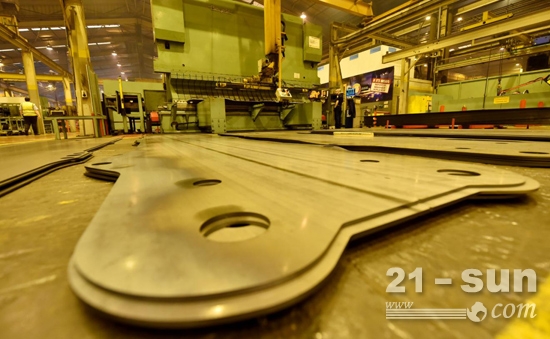
Manufacturing process
The side of the boom is spot welded and the bushing is installed before the robot welding. Before the side frame of the frame is welded, holes are drilled in advance to open the holes. It takes an average of 45 minutes to make the sides of the two frames, and drilling and opening takes about 7-12 minutes. More than 70% of the frame and boom structures are welded by robots. However, some robots have difficulty in accessing the frame and boom and require manual welding. The JCB Loadall costs 14,509,818 meters of welding wire per year, exceeding the length of 1/3 of the Earth's equator.
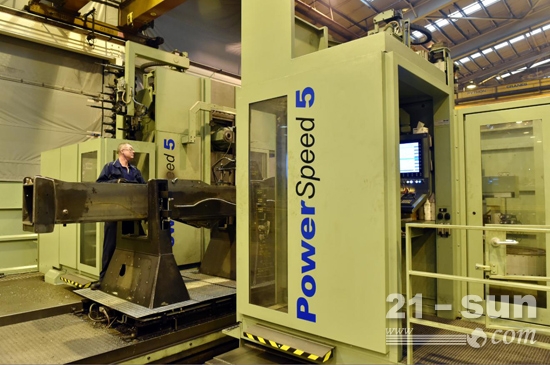
Manufacturing process
After the frame is welded, a pair of combination boring machines are used to complete the drilling of the mounting point of the bottom bracket of the boom to ensure perfect alignment of the two holes. Two CNC machining centers worth 1.2 million pounds were used to drill and tap the boom and wait for assembly.
40th Anniversary of Invention of JCB Telehandler Truck
The second: JCB classic yellow coating
In the field of construction machinery and agricultural machinery, few colors can be identified as JCB yellow paint. In the next step, the boom, frame, and legs will enter the paintwork for up to two hours. First, the external contamination was removed by shot blasting to prepare for painting.
All components will be painted before assembly to ensure high quality parts. JCB uses a two-component waterborne coating process. The Loadall production line uses 73,000 liters of primer and 50,000 liters of topcoat each year. Painted parts will be baked in a 90-120 degree baking room to ensure long-term, reliable protection.

JCB classic yellow coating
JCB classic yellow is the most commonly used color in painting, and customers can also customize personalized painting colors according to their needs. In order to reduce waste, personalized painting is generally for bulk orders, but JCB paint lines can also be personalized for a single device.
40th Anniversary of Invention of JCB Telehandler Truck
The third: efficient Loadall assembly line
The JCB Loadall structure production line has 300 workers, while the assembly line has 460 workers. All assembly line workers are versatile and can complete at least three different jobs so that they can flexibly rotate between production lines.
The complete harness is the first part to be mounted on the frame. The component distribution area is located on both sides of the main production line. Components such as wiring harness, engine, transmission, cab and axle are prepared for the assembly of the whole machine. The assembled components are put on line according to the requirements of the main production line to ensure that the assembly line assembly process is smooth and rapid.
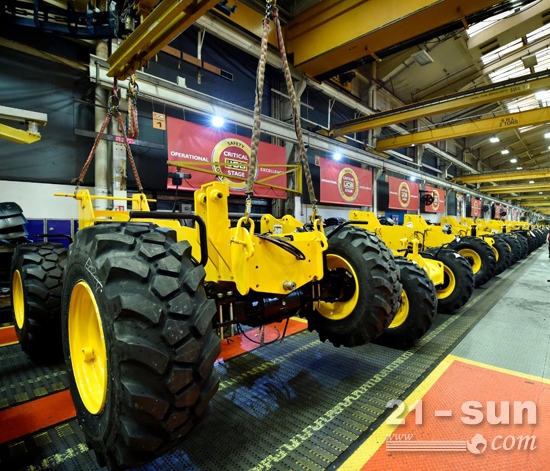
High-efficiency Loadall assembly line
On the assembly line, all sizes of Loadall can be produced in the same line, and different models can share one line. The compact Loadall has an auxiliary production line.
The axle comes from the JCB Wrexham factory. The axles are fitted with wheels and assembled on the frame. The next step is to assemble the hydraulic valve block and the JCB design and manufacturing cylinders and other components.
The engines produced by JCB Power Systems, the gearboxes produced by JCB Transmissions, and other exhaust and auxiliary devices are packed in the subassembly area.
The cab comes from the Rugeley factory. After the cab is completely packed in the sub-assembly area, it is installed together with the radiator on the entire machine. Boom loading is parallel to the frame production line. Two, three, and four booms can be installed. After the legs are installed, they are assembled on the frame.
JCB Loadall has more than 3,000 kinds of components and up to 1,000 configurations, which makes the coordination of the entire production process very important. The assembly of Loadall is divided into 35 processes, and it takes about 8 hours for a device to go from the upper line to the lower line. A total of three major inspection points were set up on the assembly line to ensure that each device complied with JCB's quality standards.
40th Anniversary of Invention of JCB Telehandler Truck
Fourth: Strict testing
After the equipment is assembled, add the engine oil and various other liquids such as hydraulic oil, diesel oil, coolant, etc., and then start the engine. Each Loadall must first perform roller road simulation tests, and the engine and transmission undergo a 13-minute speed test to calibrate the drive system.
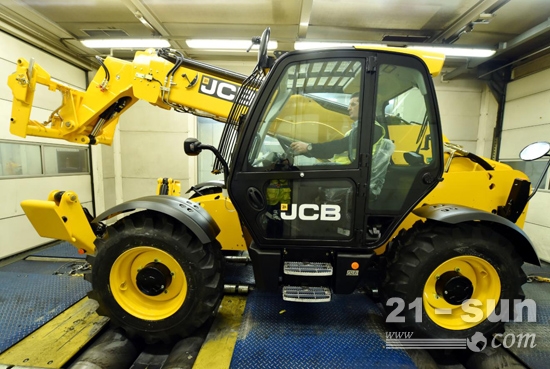
Strict testing
Through the pre-test, Loadall will enter the UV test room and detect the sealing performance of the hydraulic components through ultraviolet rays. When adding hydraulic oil, additives that are easily recognized by ultraviolet rays are added at the same time. Therefore, the leak tightness of the hydraulic system can be quickly detected by the ultraviolet rays.
When the quality inspection at this stage is completed, parts such as engine covers will be installed. The device then leaves the assembly line and enters the external test area. In the next external testing session, a total of 10 inspectors completed the compact intensive operation test. This includes warm-up tests, steering tests, weight checks, etc. Gravity testing will allow the equipment to remain under the maximum height and maximum reach for 10 minutes to check the equipment's material retention. If there is an ordering attachment, the attachments also have to be installed and tested.
Next, the equipment enters the second UV test darkroom and performs the sealing test of the UV hydraulic components. After completion, enter the pre-delivery vehicle to detect PDI. PDI is a comprehensive inspection of the entire machine to ensure that the device is ready for shipment.
40th Anniversary of Invention of JCB Telehandler Truck
Fifth: Customer Focus Center
After the previous PDI program is over, under normal circumstances, other brands can put the equipment into the shipping area or directly ship the equipment. However, JCB does better.
In March 2016, JCB established the Loadall Customer Care Center. After completing the PDI pre-test equipment, it also needs to enter the customer's attention center to check again. At the Customer Care Center, the device labelling will be posted and personalized, including toolboxes, fixture installations and other optional devices to meet customer specific needs.

Customer focus
In order to ensure that customers receive the best equipment, JCB will do a full-body car wash before starting the car to take a series of pre-delivery photos to ensure that there is no damage during transportation.
However, the real innovation of the customer focus center is the command center. Each Loadall is equipped with a JCB Livelink remote control system. All device information data will be transmitted to the command center. This data also includes JCB Tech Web service information and customer incoming call feedback from around the world. In order to better handle this information, there is a team that specializes in reviewing this feedback from global customers.
Once the customer’s concern is confirmed, the team will immediately investigate the cause. If it is related to manufacturing, it will be quickly feedback to the factory. After that, the command center will track the implementation of technological reforms to confirm the equipment for the next batch of production to ensure that the products are always maintained at the highest standards. This includes sending photos and job instructions to the customer’s attention on the tablet on the centerline to ensure that the device’s technical changes have been verified and reviewed.
The system greatly improves the processing speed of customer feedback, and the traditional method takes several weeks to get feedback and improvement in the manufacturing system.
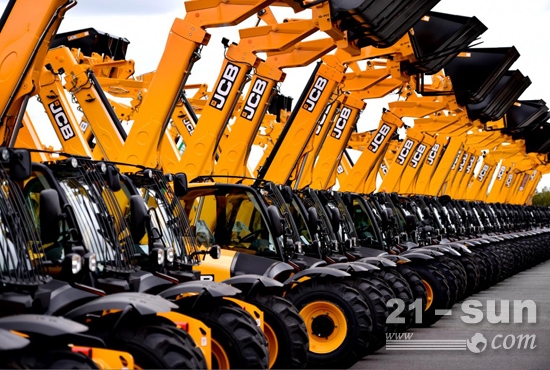
JCB Telehandler Truck
When the final inspection of the customer's attention center is completed, the equipment will be opened to the shipping area and will be sent to agents or customers around the world. However, even in the shipping area, there will still be a sampling inspection by the Loadall inspection team at any time to ensure that the JCB equipment is always in the best condition to provide the best equipment for customers around the world. (This article comes from JCB )
Daily Chemical Bag Making Machine
Daily Chemical Bag Making Machine,Cosmetic Plastic Bag Making Machine,Plastic Bags Machine Making Automatic,Self Sealing Bag Making Machine
Wuxi Shengkun Machinery Co.,Ltd , https://www.skpouchmachine.com